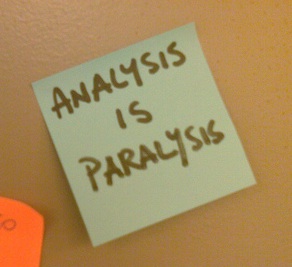Continuing this new series, I’d like to highlight a great, young mind–Akhila Kolisetty. Currently a student at Northwestern University, Akhila shares a unique willpower that refuses to be distracted and instead, stays committed and focused on international human rights.
If you want to get back in touch with what motivates you to do good, get to know Akhila. She writes with a focused idealism about how things should be–and doesn’t accepts things as they are.
In Akhila’s recent post, “The 21st Century Approach to Human Rights,” Akhila writes:
“We need to shift away from a time of declaration and into the era of implementation.”
 Akhila goes on to defend her stance in the frame of human rights work–rallying for systemic transformation and change. Not only do I admire Akhila’s position, but I am also a fan of her quote. Why? Because there are many places where this quote can apply to our work. For example, some organizations and individuals get “paralysis by analysis.” They get stuck in the cycle of rehashing research and developing plans–that implementation lags behind. Don’t get me wrong–declaration of rules, appropriate research, and strategic planning are important–but implementation and execution are also necessary.
Akhila goes on to defend her stance in the frame of human rights work–rallying for systemic transformation and change. Not only do I admire Akhila’s position, but I am also a fan of her quote. Why? Because there are many places where this quote can apply to our work. For example, some organizations and individuals get “paralysis by analysis.” They get stuck in the cycle of rehashing research and developing plans–that implementation lags behind. Don’t get me wrong–declaration of rules, appropriate research, and strategic planning are important–but implementation and execution are also necessary.
Take it to a personal level. Have you ever had a crush on someone? You plan and imagine what you will say or how to take that person out, but if you never make the ask–asking the person out–then you may have a case of paralysis by analysis.
Thank you Akhila for the great thoughts and quote. What about you–does any of this sound familiar to you or your organization?
flickr credit: Paldavo
